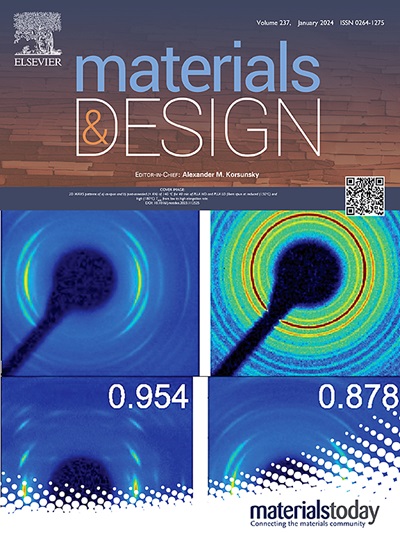Photo-responsive biomimetic catalytic hydrogel–nanocatalytic-mediated osteoclast fate regulation
IF 7.9
2区 材料科学
Q1 MATERIALS SCIENCE, MULTIDISCIPLINARY
引用次数: 0
Abstract
The main reasons why the current treatment methods for rheumatoid arthritis are not efficient in treating RA at present are insufficient drug control and the inability of surgery to repair the damage. In this study, a multifunctional hydrogel was constructed by cross-linking β-cyclodextrin with sodium alginate to synergistically utilize the photodynamic effect and arthritis therapeutic activity of curcumin. Based on the cuprous oxide/calcium peroxide complex system, the ROS produced by photoexcitation of curcumin can trigger the conversion of cuprous oxide to copper oxide, while the continuous oxygen supply of calcium peroxide enhances the efficacy of PDT. The combined effect jointly inhibits the differentiation of osteoclasts. This system forms a self-regulating collaborative treatment system through the linkage mechanism of “ROS generation – oxygen supply – bone repair”. This catalytic composite hydrogel exhibits excellent photoresponse characteristics. Compared with the second-generation traditional photosensitizers, it significantly reduces the subsequent generation of ROS, confirming its precisely controllable ROS generation ability. Moreover, by synergistic regulating the GPX4-mediated ferroptosis pathway, it promotes ferroptosis in osteoclasts in vitro. In the rat model of collagen-induced arthritis, the precise controlled-release characteristics of this system effectively inhibited osteoclast differentiation, significantly improving the pathological progression of the joints.

光响应仿生催化水凝胶-纳米催化介导的破骨细胞命运调控
目前类风湿性关节炎的治疗方法治疗RA效果不佳的主要原因是药物控制不足和手术无法修复损伤。本研究将β-环糊精与海藻酸钠交联构建多功能水凝胶,协同利用姜黄素的光动力效应和关节炎治疗活性。基于氧化亚铜/过氧化钙络合体系,姜黄素光激发产生的ROS可触发氧化亚铜转化为氧化铜,而过氧化钙的持续供氧增强了PDT的功效。两者共同抑制破骨细胞的分化。该系统通过“ROS生成-供氧-骨修复”的联动机制,形成了一个自我调节的协同治疗系统。该催化复合水凝胶具有优异的光响应特性。与第二代传统光敏剂相比,显著减少了后续ROS的产生,证实了其精确可控的ROS生成能力。此外,通过协同调节gpx4介导的铁下垂途径,在体外促进破骨细胞的铁下垂。在大鼠胶原性关节炎模型中,该系统精准控释特性有效抑制破骨细胞分化,显著改善关节病理进展。
本文章由计算机程序翻译,如有差异,请以英文原文为准。
求助全文
约1分钟内获得全文
求助全文
来源期刊

Materials & Design
Engineering-Mechanical Engineering
CiteScore
14.30
自引率
7.10%
发文量
1028
审稿时长
85 days
期刊介绍:
Materials and Design is a multi-disciplinary journal that publishes original research reports, review articles, and express communications. The journal focuses on studying the structure and properties of inorganic and organic materials, advancements in synthesis, processing, characterization, and testing, the design of materials and engineering systems, and their applications in technology. It aims to bring together various aspects of materials science, engineering, physics, and chemistry.
The journal explores themes ranging from materials to design and aims to reveal the connections between natural and artificial materials, as well as experiment and modeling. Manuscripts submitted to Materials and Design should contain elements of discovery and surprise, as they often contribute new insights into the architecture and function of matter.
 求助内容:
求助内容: 应助结果提醒方式:
应助结果提醒方式:


